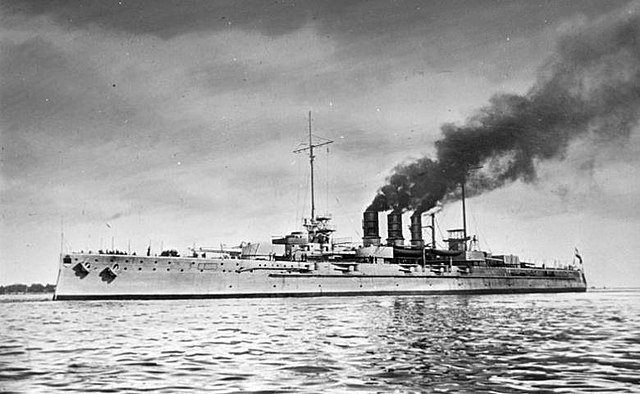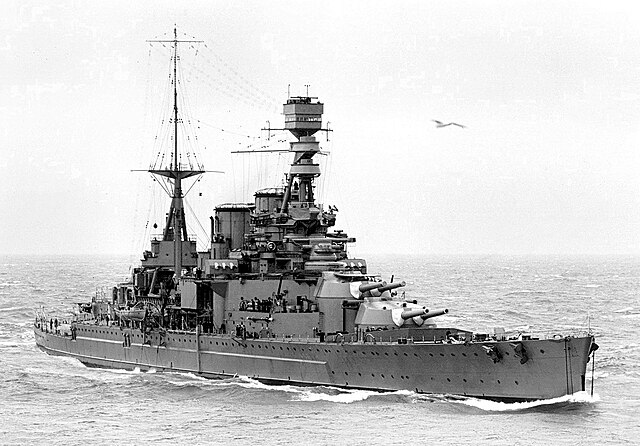The capital ships of a navy are its most important warships; they are generally the larger ships when compared to other warships in their respective fleet. A capital ship is generally a leading or a primary ship in a naval fleet.
Aircraft carriers form the main capital ships of most modern-era blue-water navies.
Battleships became the main form of capital ship after sailing vessels fell out of use, and remained so up to World War II. Shown is the German SMS Helgoland.
Ships of the line (of battle) were the capital ships of the era of sail. Pictured is the Spanish Santa Ana, a very large example with 112 guns.
British battlecruiser HMS Repulse
Sinking of Prince of Wales and Repulse
The sinking of Prince of Wales and Repulse was a naval engagement in World War II, as part of the war in the Pacific, that took place on 10 December 1941 in the South China Sea off the east coast of the British colonies of Malaya and the Straits Settlements, 70 miles east of Kuantan, Pahang. The Royal Navy battleship HMS Prince of Wales and battlecruiser HMS Repulse were sunk by land-based bombers and torpedo bombers of the Imperial Japanese Navy. In Japan, the engagement was referred to as the Naval Battle of Malaya .
Prince of Wales (left, front) and Repulse (left, behind) after being hit by torpedoes on 10 December 1941. A destroyer, HMS Express, is manoeuvring in the foreground.
Admiral Sir Tom Phillips (right), commander of Force Z, and his deputy, Rear Admiral Arthur Palliser, on the quayside at Singapore naval base, 2 December 1941.
Mitsubishi G4M Betty/"葉巻" Hamaki (Cigar) bombers of Kanoya Air Group
Mitsubishi G3M Nell of Genzan Air Group. The type was also operated by Mihoro Air Group








